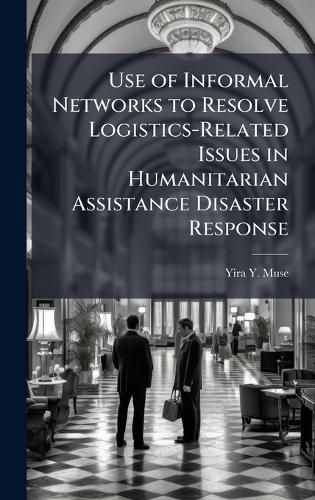Readings Newsletter
Become a Readings Member to make your shopping experience even easier.
Sign in or sign up for free!
You’re not far away from qualifying for FREE standard shipping within Australia
You’ve qualified for FREE standard shipping within Australia
The cart is loading…






The social dynamics of informal networks are not well understood in the context of Humanitarian Assistance/Disaster Response (HA/DR). Informal networks are what personnel typically rely on when formal organizational barriers constrain their ability to accomplish the mission. This study examines the use of Informal Networks to resolve logistics-related issues faced by Air Forces Special Operations Command (AFSOC) and Air Forces Southern (AFSOUTH) during their HA/DR to the Haiti Earthquake of 2010. A Content Analysis was conducted of the logistics-related Lesson Learned (LLs) reports submitted by these organizations. The purpose was to determine if there exist any patterns in the LLs that identify situations where it is more beneficial to leverage Informal Networks than to rely on the existing Formal Networks, and to provide insight into the Informal Networks present throughout disaster response organizations. The results suggest that Informal Networks provided successful resolution of issues more often than Formal Networks and they were also used more often than Formal Networks. Hopefully, such insight will enable Air Force leaders to improve their organizational communication during disaster response by properly leveraging their units' Informal Networks.
This work has been selected by scholars as being culturally important, and is part of the knowledge base of civilization as we know it. This work was reproduced from the original artifact, and remains as true to the original work as possible. Therefore, you will see the original copyright references, library stamps (as most of these works have been housed in our most important libraries around the world), and other notations in the work.
This work is in the public domain in the United States of America, and possibly other nations. Within the United States, you may freely copy and distribute this work, as no entity (individual or corporate) has a copyright on the body of the work.
As a reproduction of a historical artifact, this work may contain missing or blurred pages, poor pictures, errant marks, etc. Scholars believe, and we concur, that this work is important enough to be preserved, reproduced, and made generally available to the public. We appreciate your support of the preservation process, and thank you for being an important part of keeping this knowledge alive and relevant.
$9.00 standard shipping within Australia
FREE standard shipping within Australia for orders over $100.00
Express & International shipping calculated at checkout
The social dynamics of informal networks are not well understood in the context of Humanitarian Assistance/Disaster Response (HA/DR). Informal networks are what personnel typically rely on when formal organizational barriers constrain their ability to accomplish the mission. This study examines the use of Informal Networks to resolve logistics-related issues faced by Air Forces Special Operations Command (AFSOC) and Air Forces Southern (AFSOUTH) during their HA/DR to the Haiti Earthquake of 2010. A Content Analysis was conducted of the logistics-related Lesson Learned (LLs) reports submitted by these organizations. The purpose was to determine if there exist any patterns in the LLs that identify situations where it is more beneficial to leverage Informal Networks than to rely on the existing Formal Networks, and to provide insight into the Informal Networks present throughout disaster response organizations. The results suggest that Informal Networks provided successful resolution of issues more often than Formal Networks and they were also used more often than Formal Networks. Hopefully, such insight will enable Air Force leaders to improve their organizational communication during disaster response by properly leveraging their units' Informal Networks.
This work has been selected by scholars as being culturally important, and is part of the knowledge base of civilization as we know it. This work was reproduced from the original artifact, and remains as true to the original work as possible. Therefore, you will see the original copyright references, library stamps (as most of these works have been housed in our most important libraries around the world), and other notations in the work.
This work is in the public domain in the United States of America, and possibly other nations. Within the United States, you may freely copy and distribute this work, as no entity (individual or corporate) has a copyright on the body of the work.
As a reproduction of a historical artifact, this work may contain missing or blurred pages, poor pictures, errant marks, etc. Scholars believe, and we concur, that this work is important enough to be preserved, reproduced, and made generally available to the public. We appreciate your support of the preservation process, and thank you for being an important part of keeping this knowledge alive and relevant.